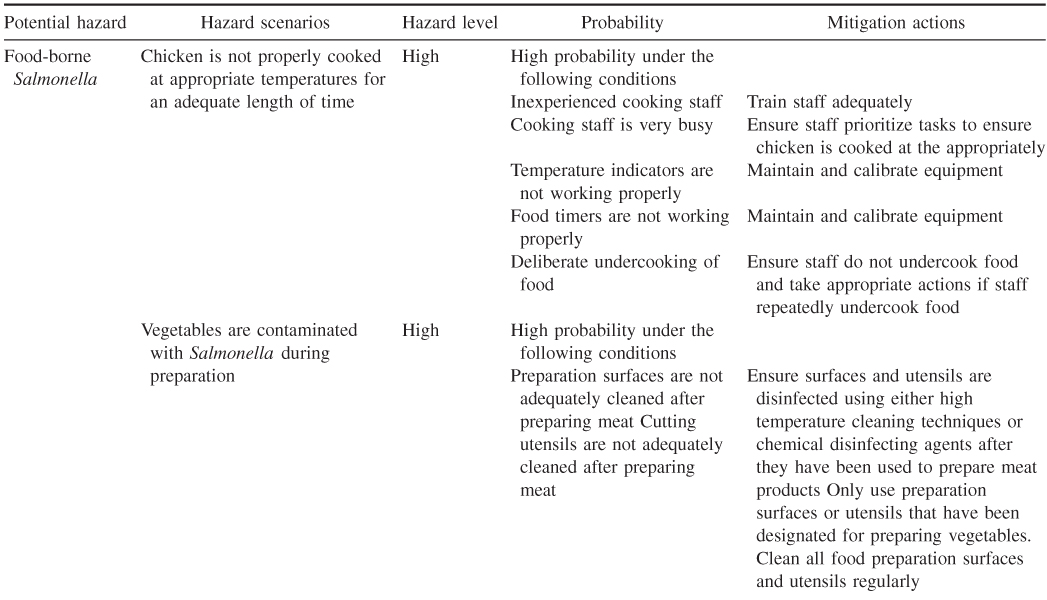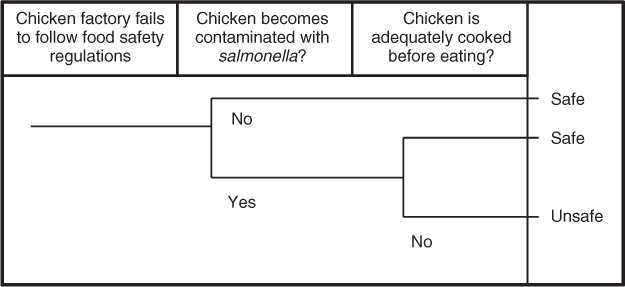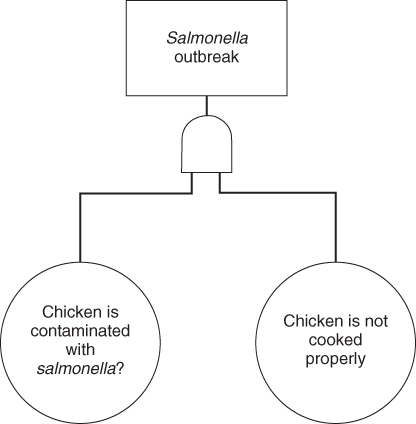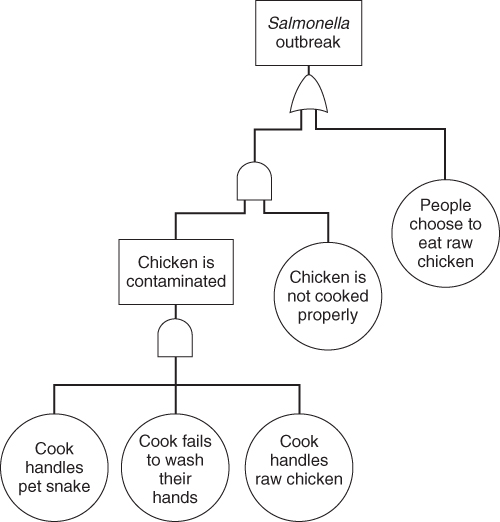22.4 Case Study 4: Overview
22.4.1 Introduction
Food-borne disease outbreaks in the United States have become much too common. Illness cause by Escherichia coli is one of the more common types of food-related illnesses. However, most of the food-borne outbreaks in the United States are caused by Salmonella. Salmonella is a bacterium that is mostly found in food products that are meat based. Salmonella lives in the intestines of many animals, including humans (3). The bacteria are excreted from feces onto food products. When Salmonella are ingested, it will make humans sick, even though Salmonella lives in the intestines naturally.
One reason that Salmonella outbreaks are not more common is because the bacteria die when cooked at a high temperature. However, fresh produce does not get cooked and some of the outbreaks are associated with vegetables such as lettuce, peppers, and even alfalfa sprouts.
In 2008, there was a massive outbreak of Salmonella (1). Forty-three states were affected and 1329 document cases of salmonellosis were diagnosed from April 10, 2008, to July 31, 2008. The outbreak was one of the largest outbreaks of Salmonella in the United States. The source of the bacteria was said to be from Jalapeño and Serrano peppers, Cilantro, and possibly tomatoes from Mexico.
Most of the cases were reported from April 16 to July 9. During this period, there were 1017 people who were diagnosed. Of these cases, 203 people were hospitalized and 1 person died. At the beginning of the outbreak, it was thought that tomatoes were the cause of the outbreak. As the outbreak continued, it was found that peppers and cilantro were also contaminated with Salmonella.
Most persons infected with Salmonella develop diarrhea, fever, and abdominal cramps 12 to 72 h after infection. The illness usually lasts for 4–7 days and most persons recover without treatment. However, in some cases, the diarrhea may be so severe that the patient needs to be hospitalized. In these patients, the Salmonella infection may spread from the intestines to the blood stream, and then to other body sites and can cause death unless the person is treated promptly with antibiotics. The elderly, infants, and those with impaired immune systems are more likely to have a severe illness.
The following measures should be taken to reduce the potential for a Salmonella outbreak:
- Food that is potentially infected by Salmonella should be heated at temperatures of 55°C (131°F) for 1 h or to 60°C (140°F) for half an hour (4).
- To protect against Salmonella infection, it is recommended that food be heated for at least 10 min at 75°C (167°F).
- Cook poultry, ground beef, and eggs thoroughly. Do not eat or drink foods containing raw eggs or raw (unpasteurized) milk.
- Do not hesitate to send back to the kitchen undercooked meat products for further cooking.
- Wash hands, kitchen work surfaces, and utensils with soap and water immediately after they have been in contact with raw meat or poultry.
- Be particularly careful with foods prepared for infants, the elderly, and the immunocompromised.
- Wash hands with soap after handling reptiles, birds, or baby chicks and after contact with pet feces.
- Avoid direct or even indirect contact between reptiles (turtles, iguanas, other lizards, and snakes) and infants or immunocompromised persons.
- Do not work with raw poultry or meat and an infant (e.g., feed and change diaper) at the same time.
- Mother's milk is the safest food for young infants. Breast-feeding prevents salmonellosis and many other health problems (5).
22.4.2 Food Safety Risk Assessment
Risk assessment models can be developed using the food safety parameters discussed above and the risk assessment tools and techniques discussed in this book. For this case study, the following limited sample models were developed:
- PHA;
- event tree analysis;
- fault tree analysis.
However, this is not to say that other models cannot be developed using other techniques.
Preliminary Hazard Analysis
Table 22.6 shows a limited PHA that was developed for the risk of Salmonella from food handling in say a restaurant.
Table 22.6 Food Safety Preliminary Hazards


Event Tree Analysis
Event trees are best used to help describe how a more widespread food-borne Salmonella outbreak could occur. Figure 22.9 shows an event tree for such a purpose.
Figure 22.9 Event tree.

Fault Tree Analysis
There are many ways to develop fault trees for the information provided in this case study. Figures 22.10 and 22.11 show two examples of the types of fault trees that can be developed.
Figure 22.10 Food safety fault tree 1.

Figure 22.11 Food safety fault tree 2.

